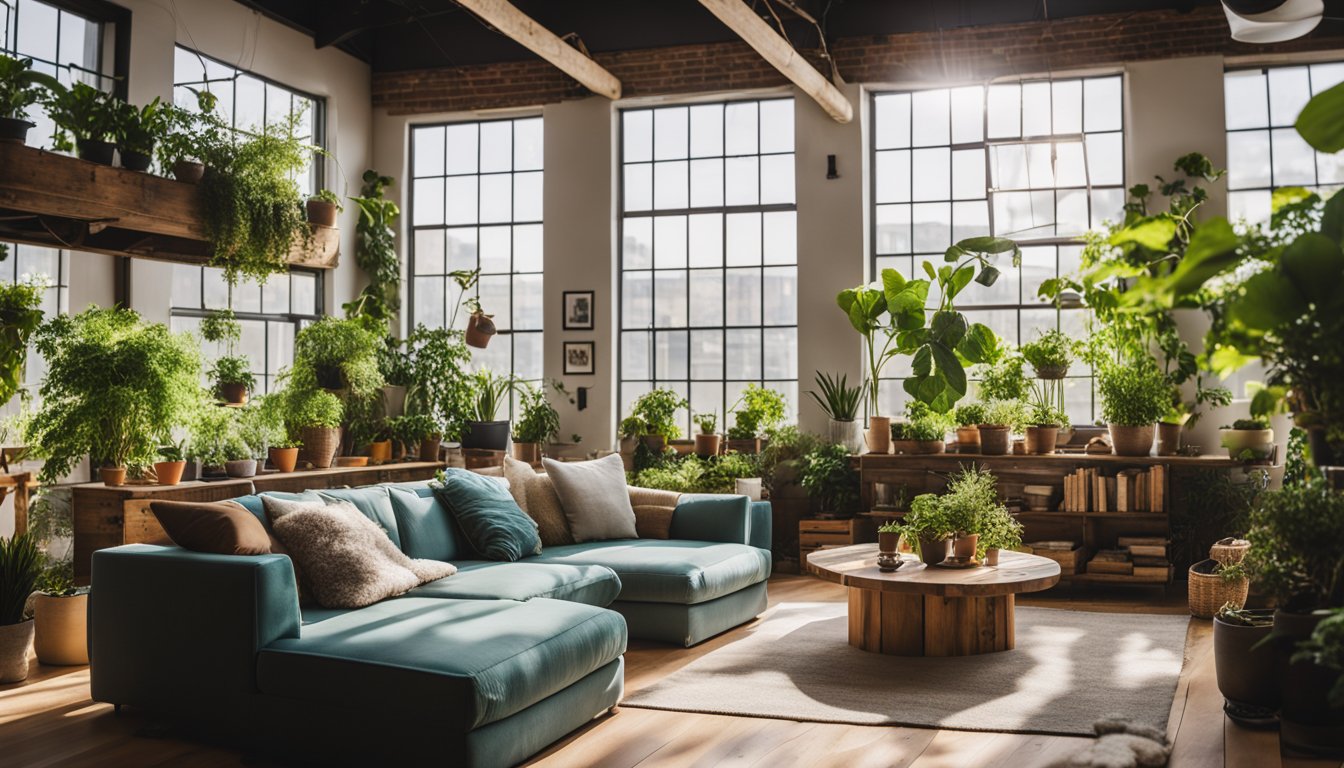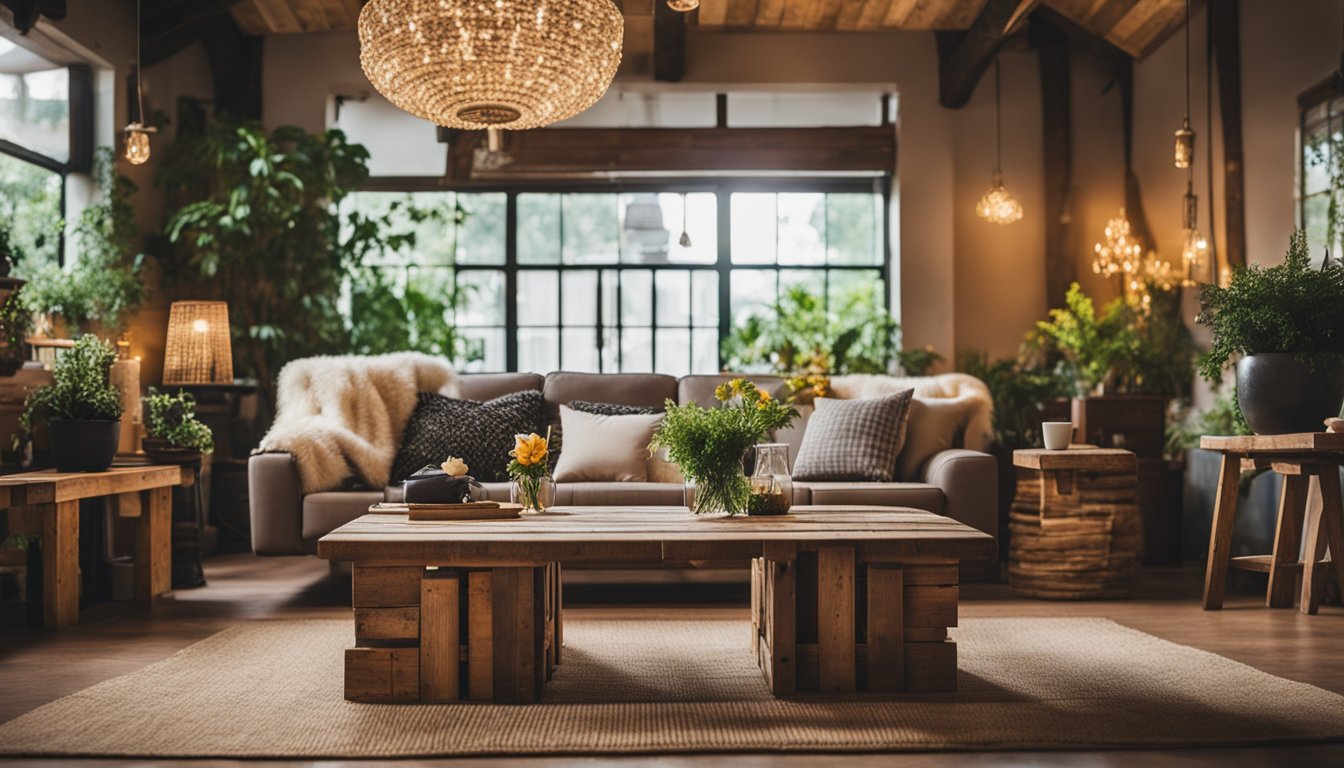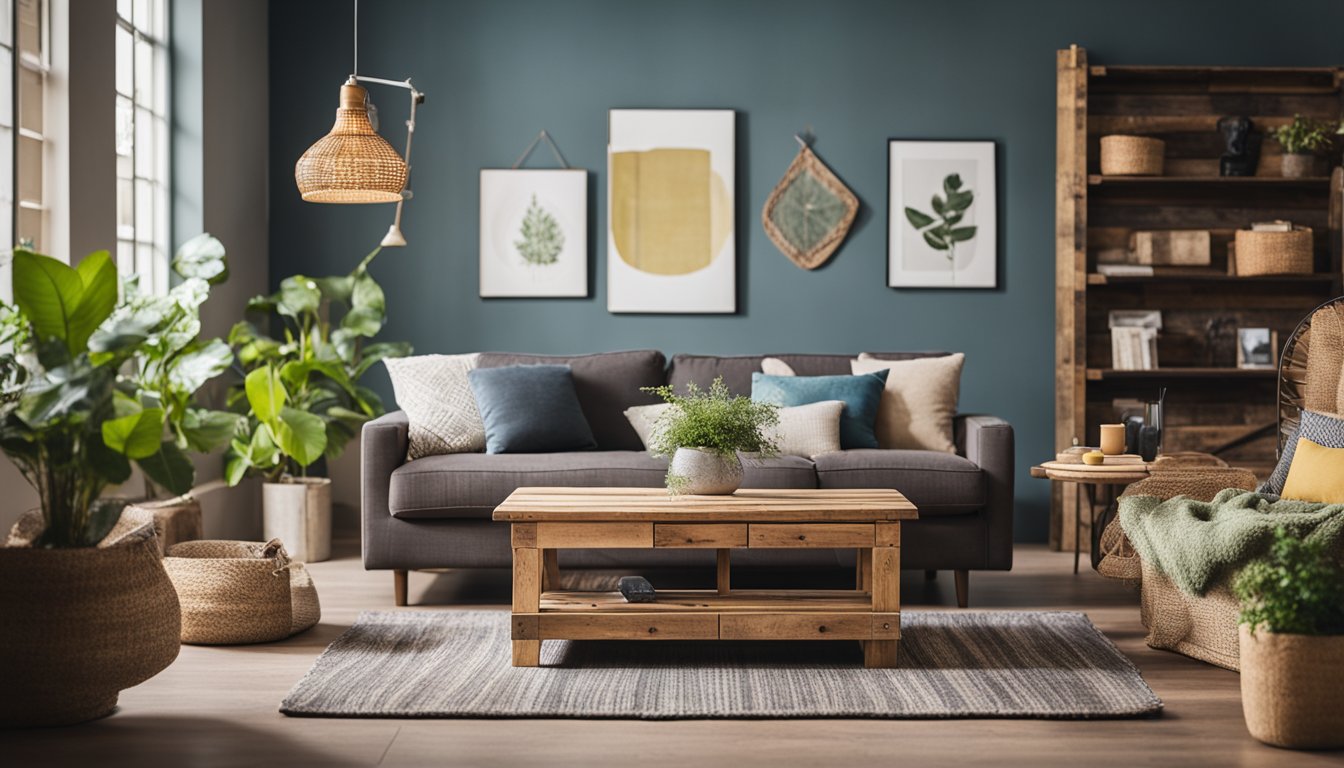Late updated: 14 Feb 2025 09:02
Written by: Daniel Harper
Innovative Upcycling Ideas for Eco-Friendly Homes: Transform Your Space Sustainably
Upcycling isn't just a trend—it's an inspiring practice that breathes new life into old items and contributes to a more sustainable future. By transforming unwanted materials into something fresh and useful, we not only reduce waste but also add a unique personal touch to our homes. Our world is full of possibilities for creativity, where discarded wood can be elegantly crafted into a chic patio set or old jeans can become a practical wall organiser.

In an era where sustainability is crucial, innovative upcycling ideas provide a promising avenue for eco-friendly living. There are myriad ways to incorporate upcycled projects into our daily lives, from crafting decorative items to enhancing household functionality. The real beauty of upcycling lies in its dual benefit—it nurtures creativity while promoting environmental health.
Exploring the artistry in upcycling uncovers a world where everyday objects are reimagined and transformed. This creative process can be both practical and enjoyable, turning simple DIY projects into conversations starters. Let's discover how traditional materials can become stylish and eco-friendly solutions for our homes.
Key Takeaways
- Upcycling allows for creative reuse of materials with environmental benefits.
- Reimagining household items through upcycling offers practical and aesthetic improvements.
- Engaging in upcycling fosters artistry and innovation in eco-friendly living.
Reimagining Household Items
In our homes, many items can be repurposed creatively to minimise waste and infuse a personal touch into our spaces. By giving new life to plastic, textiles, and wood, we can craft unique and functional pieces that are both eco-friendly and stylish.
From Plastic to Practical
Plastic bottles and containers are common household items that can be transformed into practical solutions. We can cut them into garden markers, which provide a durable and water-resistant way to label our plants. Their versatility also extends to being used in vertical gardens, where they serve as clever plant holders mounted on walls or fences. This not only reduces our plastic waste but also beautifies outdoor spaces.
Furthermore, converting plastic bottles into watering devices for our indoor or outdoor plants is another effective approach. With a few simple cuts and a creative arrangement, these bottles can manage water flow and keep our greenery healthy. Such projects reduce dependency on new goods while showcasing our creativity.
Textile Transformation
Textiles like old t-shirts are often overlooked yet offer numerous upcycling possibilities. Instead of discarding them, we can turn them into t-shirt tote bags. This simple craft cuts down on textile waste and provides sturdy, reusable shopping options. It’s a project that aligns well with sustainable fashion principles and diminishes the need for single-use bags.
Using fabric scraps in patchwork projects can add a personalised touch to cushions, quilts, or even wall art. These projects not only recycle existing materials but also bring warmth and uniqueness into our homes. By embracing textile transformation, we engage in eco-friendly creativity that resonates with conscious consumerism.
Wooden Wonders
Wood, particularly in the form of old pallets or reclaimed pieces, offers exciting opportunities for upcycling. Repurposing old pallets into garden furniture can create robust and charming seating areas. With some sanding and a splash of paint, these pallets turn into stylish tables or benches for our gardens, blending sustainability with rustic elegance.
Crafting shelves or storage units from reclaimed wood can add character to any room. Every piece bears its history, offering both function and a narrative. By capitalising on wooden wonders, we extend the lifecycle of materials and reduce our environmental impact, all while crafting one-of-a-kind home decor that tells a story.
Artistry in Upcycling

Innovative upcycling infuses artistic flair into everyday items, transforming them into eco-friendly pieces that highlight a sustainable lifestyle. Whether it’s reshaping old wooden pallets into chic furniture or converting vintage suitcases into unique decor, we delve into creative repurposing that enhances any home setting.
Chic Furniture Creations
Our homes become workshops for crafting unique, stylish pieces with upcycling. Think about tire ottomans, which not only add rustic charm but offer an eco-friendly seating option. Repurposing old tires with rope or fabric creates durable and stylish ottomans that suit any lounge.
Fancy creating a coffee table from pallets? These robust structures, once sanded and painted, provide a blank canvas to let your imagination fly. Adding vintage suitcases as storage elements under these tables enhances functionality and adds a touch of vintage charm.
Accentuating Home Decor
Decor gains a transformative touch through upcycling. We can take glass bottles or jars, and with a bit of creativity, transform them into elegant vases or unique lighting fixtures. Painting or etching these can infuse a personal touch, making each piece a conversation starter.
Imagine turning an old ladder into a ladder bookshelf. Its rungs become perfect shelves for displaying books or decor items, providing a rustic yet stylish storage solution. A vintage suitcase might even serve as a quirky addition—doubling as a pet bed when lined with soft fabric.
Innovative Garden and Storage Solutions
The garden offers numerous opportunities for upcycled creativity. Consider herb planters made from discarded wooden crates or even broken ceramics pieced together into mosaic art, offering not just practicality but a sustainable lifestyle art piece.
Creating furniture for the garden with old pallets and using vintage charm through things like vintage suitcases can transform any outdoor space. A weathered suitcase can function as a unique planter or even a storage bench, combining utility and aesthetic appeal harmoniously.
As we explore these spaces, every piece tells a story of transformation, offering homes vibrant charm while emphasising sustainability.
Frequently Asked Questions

Incorporating upcycled materials into our homes can enhance aesthetic appeal and promote sustainability. Below, we'll cover common questions, discuss successful projects, explore product sales, and highlight environmental benefits.
What are the leading examples of successful upcycled projects?
Successful upcycled projects often transform discarded materials into furniture or home decor. Turning old wooden pallets into patio sets or repurposing glass jars as storage containers are popular and effective examples, blending functionality with style. These projects not only rejuvenate old items but also add unique character to the home.
Which upcycled products achieve the highest sales?
Products such as upcycled furniture, including tables and chairs crafted from reclaimed wood, often achieve high sales. Consumers appreciate the rustic charm and sustainability these items offer. Upcycled fashion and accessories, like handbags made from recycled materials, are also popular, catering to environmentally conscious buyers seeking distinctive and ethical products.
How does upcycling benefit the environment?
Upcycling significantly reduces waste by giving unwanted items a new purpose. This process decreases demand for natural resources as fewer new materials are needed. By reimagining old items, we not only diminish waste but also lower our overall ecological footprint. Upcycling promotes a circular economy, conserving resources and energy.
What items are the simplest to repurpose through upcycling?
Glass jars and bottles are among the easiest items to repurpose, often finding new life as vases or storage solutions. Wooden pallets and worn-out furniture can be effortlessly converted into garden seating or coffee tables. Fabric scraps and old clothes can be fashioned into new textiles or household items with minimal effort.
How can upcycling be incorporated into home design?
Integrating upcycled elements into home design can be achieved by using reclaimed wood for flooring or accent walls. Upcycled decor such as light fixtures made from old pipes can add character. By blending these items into a home’s aesthetic, we create a personalised, sustainable space that reflects individual style and eco-consciousness.
What materials lend themselves well to creative upcycling?
Wood, metal, and glass are versatile materials that adapt well to upcycling. Each has unique properties that allow for creative repurposing, whether it’s old metal pipes becoming shelving units or glass jars serving as lanterns. Fabric remnants and plastic bottles also offer potential for diverse upcycled projects, ranging from textiles to planters.
